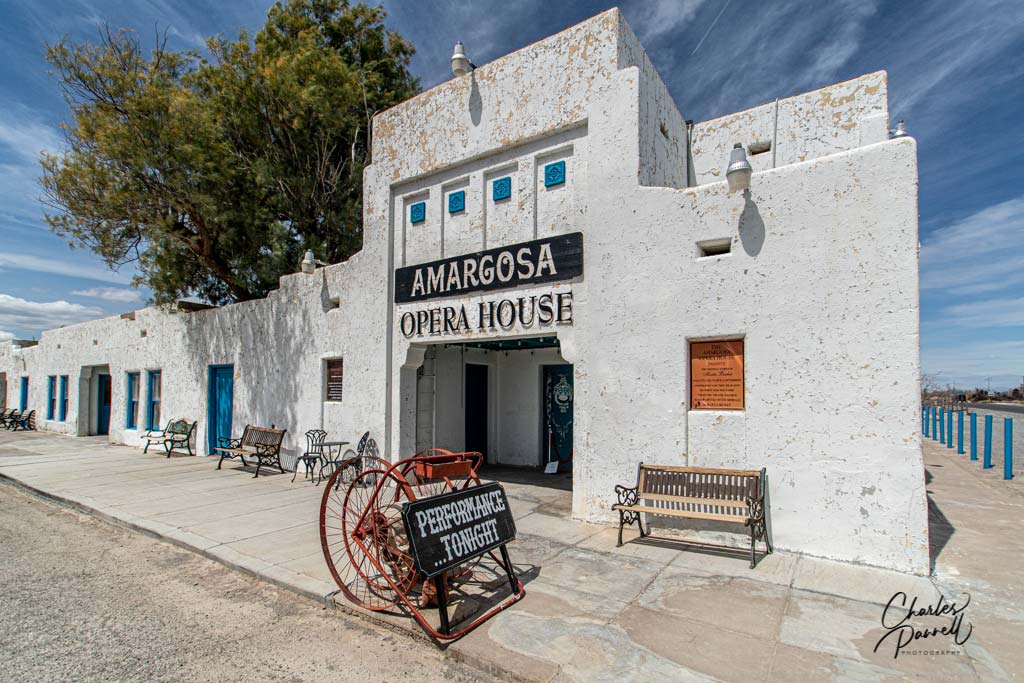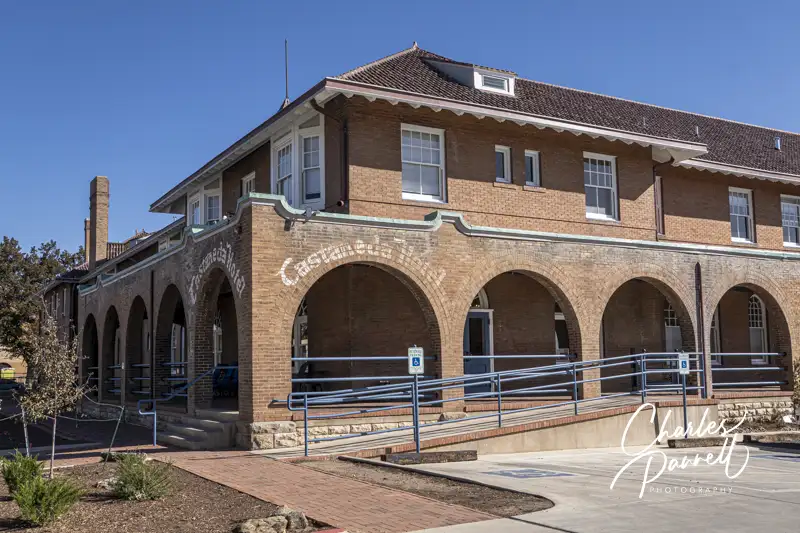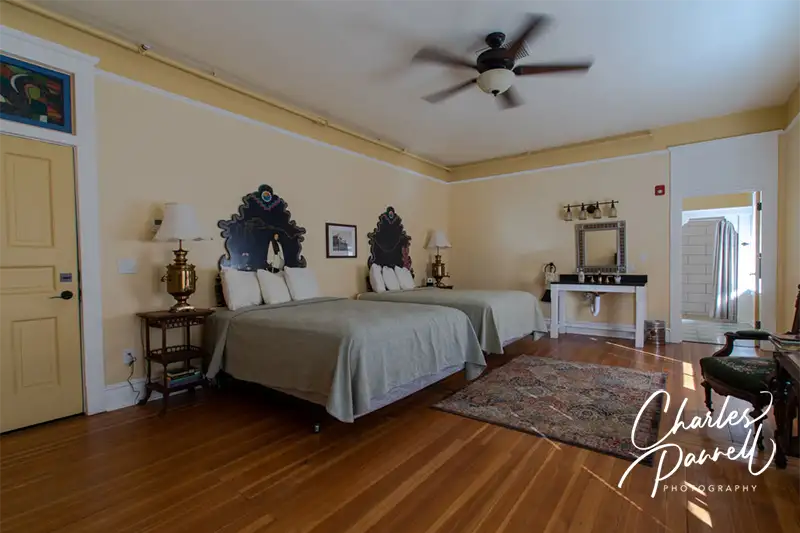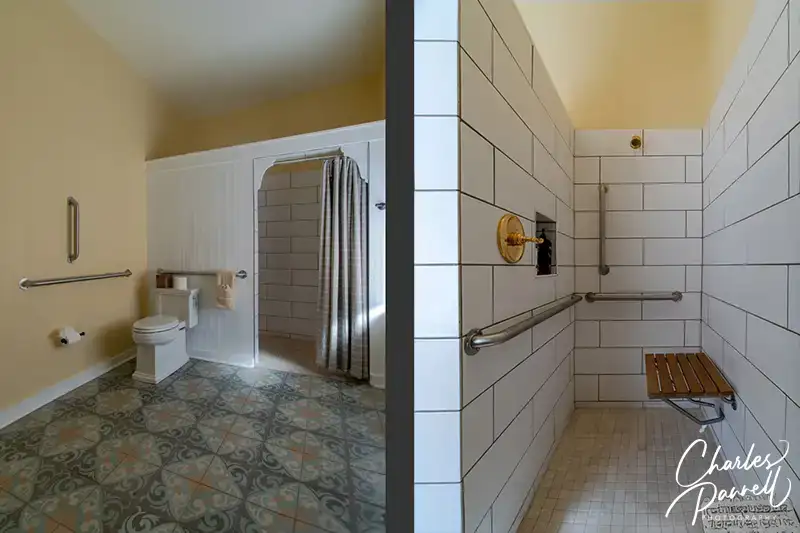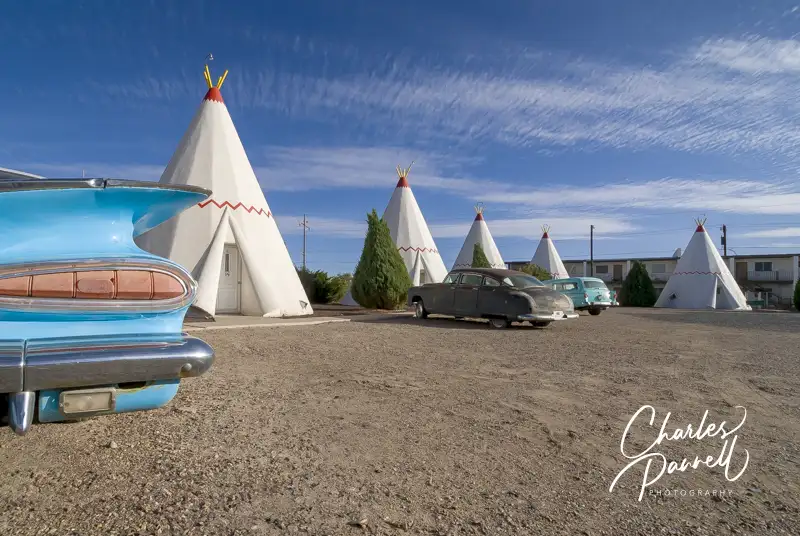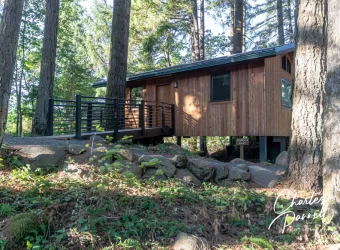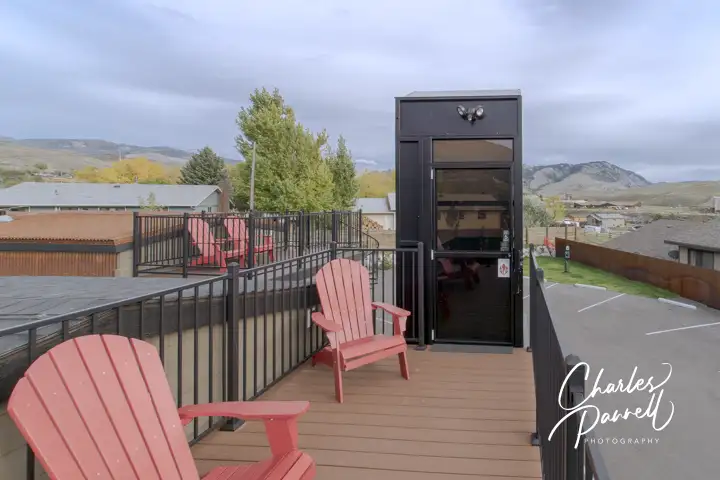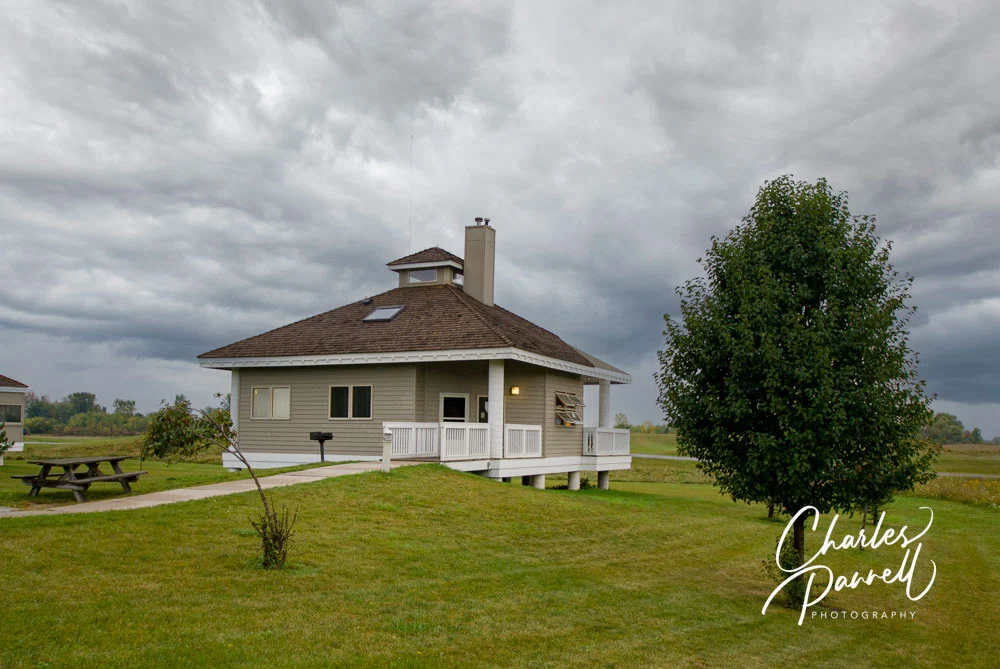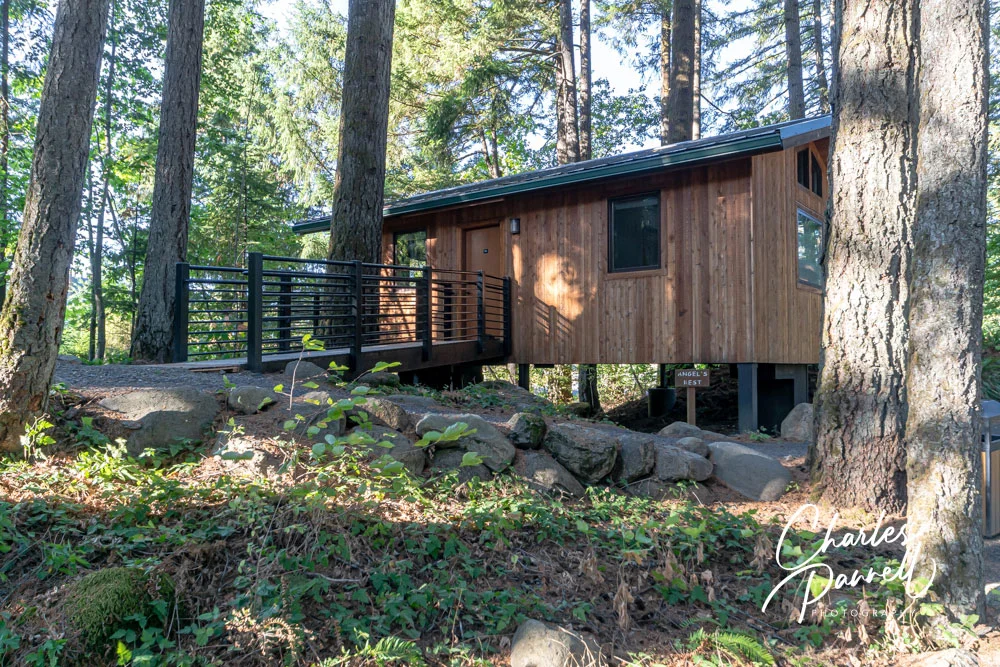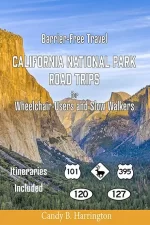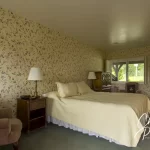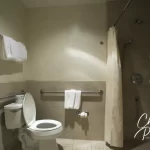The El Morocco Inn – A Wheelchair-Accessible Oasis in the California Desert

As you walk under the entry arch and peel back the heavy brocade curtains at the El Morocco Inn & Spa (www.elmoroccoinn.com), you’re instantly transported to another world – one that’s filled with the sights, sounds and even the smells of Morocco. From the bright blue doors and the massive ceramic pots throughout the courtyard, to the smell of incense wafting on the desert breeze, and strains of Moroccan music in the background, you definitely get that “I’m not in Kansas any more” feeling as you enter this sanctuary.
And that’s exactly the reaction that Bruce Abney wants all of his guests to have – he wants everyone to have an amazing experience at his little piece of Morocco in the middle of Desert Hot Springs. And the good news is, Bruce’s desert oasis is also accessible for wheelchair-users and slow walkers.
A Man with a Vision
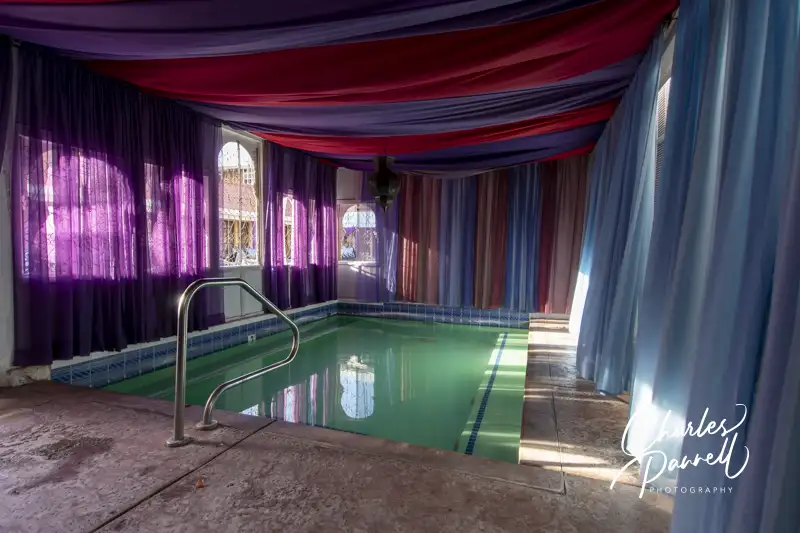
Built in the late 1950s the El Morocco Inn was originally known as the Caravan Spa-tel. The property thrived in the 50s and 60s, when Desert Hot Springs was known as “California’s Spa City”. Visitors traveled for miles to soak in the healing waters. Unfortunately, many of the resorts closed over the years — including the Caravan Spa-tel — because of the high cost of maintaining the hot springs. Bruce stepped into the picture in 2001, when he purchased the property and proceeded to transform it into a Moroccan paradise.
As a child, Bruce was intrigued by the El Morocco Hotel in Las Vegas, so when the Caravan Spa-tel renovations began, that Las Vegas property became his inspiration. He also immensely enjoyed his own journey to Morocco, and he wanted to create that feeling of “being a million miles away from home” for his guests. And he wanted something authentic, so he purchased handwoven fabrics from Moroccan co-ops, and filled the property with goatskin wrapped lights and hanging lamps that cast mesmerizing geometric shadows. “Even the tent in the Spa Garden is the real deal, as are the little touches like the succulent dates available in the Kasbah Lounge,” says Bruce.
As for his inclusive attitude and his decision to add top-drawer access features to this 13-room property, Bruce chalks it all up to “good hospitality”. “I had to ask myself ‘Did I want to share this experience with as many folks as possible who might enjoy it?,’” says Bruce. “The answer back to myself was a heartfelt yes, so I decided to go all out,” he adds. So although the inn itself has the look and feel of a Marrakech riad, it also has first-rate access features for wheelchair-users and slow walkers.
An Accessible Oasis
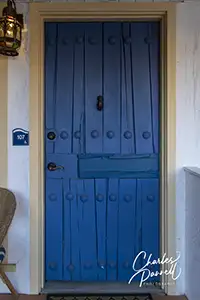
El Morocco’s access begins in the parking lot, with accessible parking and level access to the front door. Inside there’s barrier-free access to the front desk, and ramp access into the courtyard. Accessible room 107 is located on the opposite side of the courtyard. And In keeping with the Moroccan theme, the room is a patchwork of vivid colors, with a sheer canopy with tassel accents hanging above the bed.
Access features include ramp access, wide doorways, lever handles and good pathway access. It’s furnished with a 27-inch high open-frame king-sized bed with wheelchair access on the right side (as you face it), but there’s plenty of room for it to be moved over if you require wheelchair access on the left side. Other furnishings include two night tables, a chair, a wardrobe, a chest of drawers, a mini-fridge and a microwave.

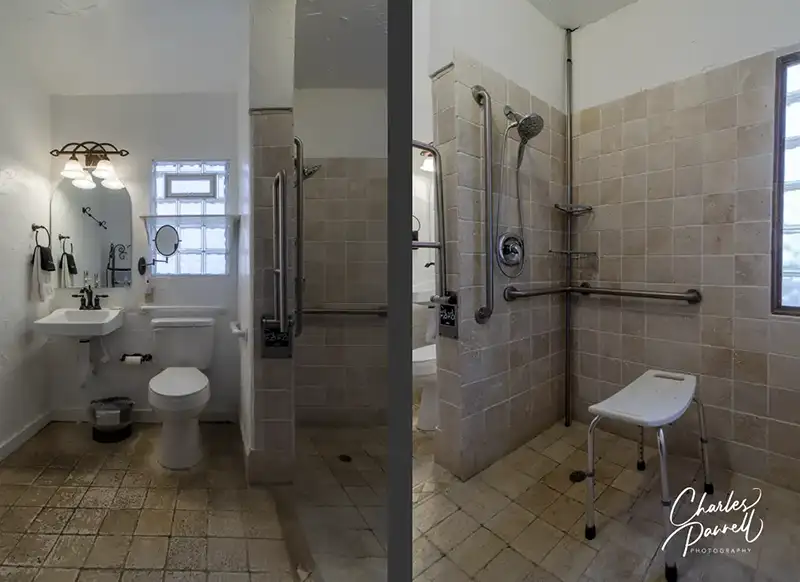
A wide sliding barn door leads into the spacious bathroom, which has a full five-foot turning radius and is equipped with a custom-built roll-in shower with grab bars, a hand-held showerhead and a portable shower bench. There’s also a set of fold-down grab bars for easier transfers. The toilet grab bars are located on the back and left walls (as seated), and the bathroom also has a roll-under sink, a lowered mirror and a lowered towel bar. And even with all those access features, the bathroom still retains the Moroccan ambiance with colorful accent pieces.
There’s wheelchair-access to the public spaces as well, including the Kasbah Lounge, the Spa Garden, the outdoor showers and the public restroom. There’s also plenty of room for even the largest wheelchair or scooter to maneuver around the lift-equipped mineral pool, and over to the fire pit.
But Wait – There’s More

In the end, it’s the little extras that make for a memorable getaway, and the El Morocco Inn has no shortage of those. At the top of the list is breakfast. Although it’s called a Continental breakfast, I’d actually describe it as a Continental-plus affair. Each morning the Kasbah Lounge is filled with fresh fruit, juices, freshly baked goodies, hard-boiled eggs and all the accompaniments to put together a luscious — and filling — meal. And the pièce de résistance? French press coffee. Guests can either choose to enjoy their repast at one of the courtyard tables, or in their own rooms.
Even the spa treatments have a taste of Morocco – minus the overzealous exfoliation treatments found in the hammams. Guests can choose from a variety of massages and body treatments including a Moroccan clay body mask, which uses Moroccan Rhassoul clay. Known for its ability to stimulate cell renewal, this treatment revitalizes and softens the skin.
And last but not least, there’s the library – a little nook located next to the Kasbah Lounge. Filled with books and DVDs to borrow, it’s a cozy spot to retreat and relax. Alternatively, you can watch that Bogart classic, Casablanca, which plays on a continuous loop throughout the day. A subtle nod to El Morocco’s roots, the film also creates the perfect ambiance for this wheelchair-accessible oasis in the California desert.



